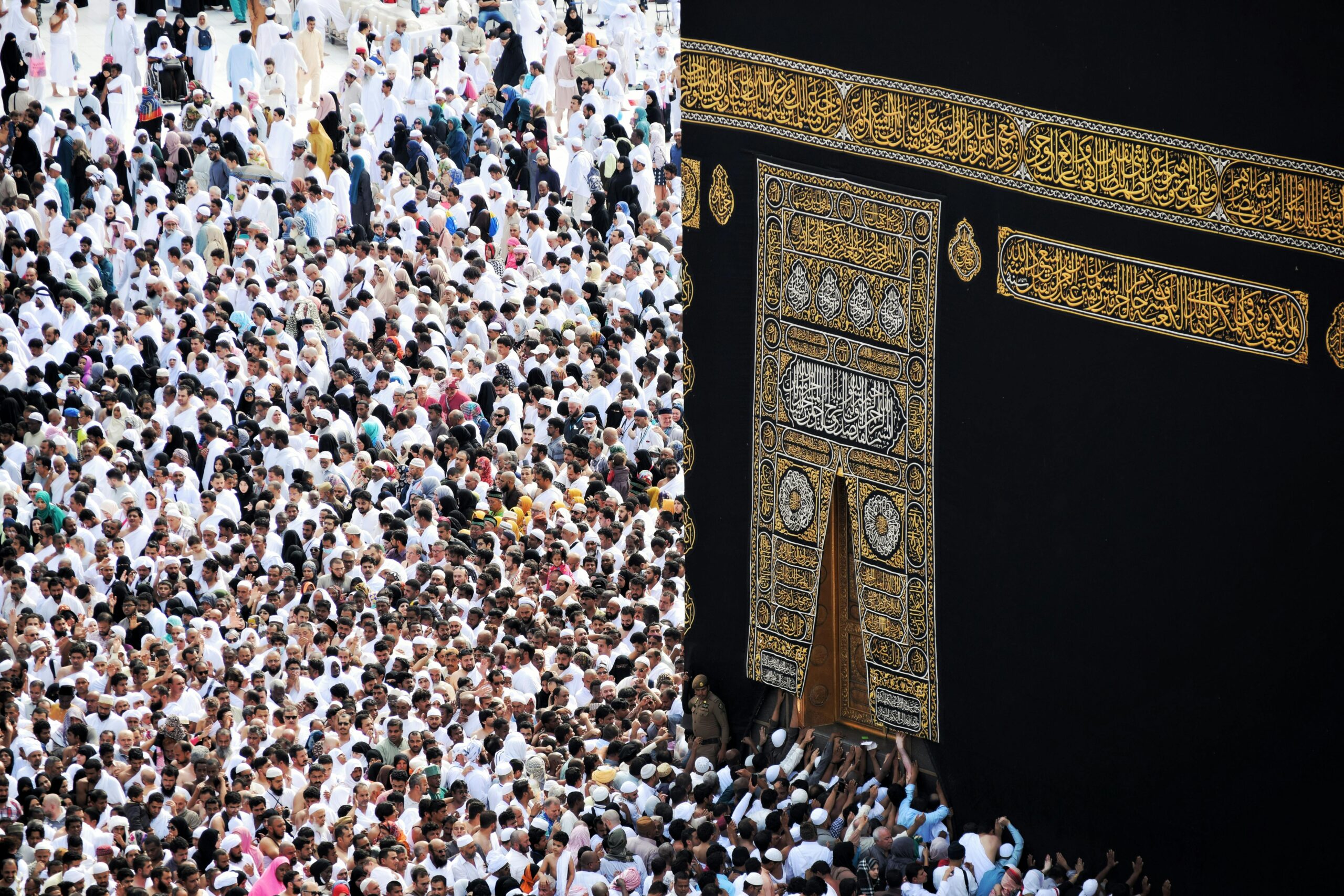Embarking on a spiritual journey to sacred sites offers transformative experiences that transcend ordinary travel, connecting pilgrims with centuries of faith, culture, and human devotion.
🌍 The Timeless Call of Sacred Journeys
Throughout human history, pilgrimage has represented one of the most profound forms of travel. Unlike conventional tourism, visiting sacred sites involves a deeper purpose—a quest for meaning, healing, enlightenment, or connection with the divine. These journeys take travelers to places where the veil between the material and spiritual worlds seems thinnest, where countless souls before have walked, prayed, and sought transformation.
Sacred sites exist across every continent and within every major religious tradition. From ancient stone circles predating recorded history to contemporary centers of worship, these destinations continue to draw millions of seekers annually. The pilgrimage experience combines physical challenge, cultural immersion, and spiritual reflection in ways that fundamentally differ from ordinary vacations.
Modern pilgrims travel by various means—some walk traditional routes spanning hundreds of miles, while others fly across oceans to reach distant holy places. Regardless of the journey’s logistics, what remains constant is the intention: to step outside everyday life and engage with something transcendent and eternal.
⛪ Christianity’s Most Revered Pilgrimage Routes
Christian pilgrimage traditions stretch back to the earliest centuries of the faith, with countless routes crisscrossing Europe, the Middle East, and beyond. These paths have shaped cultural landscapes and continue to offer profound spiritual experiences for believers and curious travelers alike.
The Camino de Santiago: Walking Through History
Perhaps no Christian pilgrimage captures the modern imagination quite like the Camino de Santiago. This network of routes converges on the Cathedral of Santiago de Compostela in northwestern Spain, believed to house the remains of Saint James the Apostle. The most popular route, the Camino Francés, spans approximately 800 kilometers from the French Pyrenees through Spain’s diverse landscapes.
Pilgrims walking the Camino encounter medieval villages, Romanesque churches, and fellow travelers from around the globe. The journey typically takes 30-35 days on foot, though many choose shorter sections. Along the way, the iconic yellow arrows and scallop shell symbols guide walkers, while albergues (pilgrim hostels) provide affordable accommodation and opportunities for community.
The Camino experience extends beyond religious devotion—many walk for personal reflection, healing after loss, or simply the challenge of completing such an epic journey. Upon arrival in Santiago, pilgrims who have walked at least 100 kilometers receive the Compostela certificate, a tradition dating back centuries.
Jerusalem: The Holy City’s Sacred Geography
Jerusalem stands as Christianity’s most sacred city, where Jesus taught, was crucified, and according to Christian belief, resurrected. The Via Dolorosa traces Christ’s path to crucifixion, with fourteen Stations of the Cross marking significant moments. The journey culminates at the Church of the Holy Sepulchre, built over the traditional sites of Calvary and Christ’s tomb.
Pilgrims to Jerusalem navigate layers of history spanning millennia, where ancient stones witness the convergence of Judaism, Christianity, and Islam. The experience involves physical navigation through crowded narrow streets, but also spiritual navigation through profound theological terrain. Many pilgrims describe Jerusalem as overwhelming—simultaneously inspiring, challenging, and deeply moving.
Rome and Vatican City: The Heart of Catholicism
Rome’s designation as the Eternal City extends to its role as a pilgrimage destination. St. Peter’s Basilica, built over the tomb of the apostle, attracts millions annually. The Vatican Museums, Sistine Chapel, and countless churches throughout Rome house artistic and architectural treasures that tell Christianity’s story through beauty and craftsmanship.
Traditional Roman pilgrimage includes visiting the Seven Pilgrim Churches, established by Saint Philip Neri in the 16th century. This route connects major basilicas and offers a comprehensive spiritual tour of the city’s Christian heritage. During Holy Years (Jubilees), special indulgences draw even larger crowds of faithful pilgrims.
🕌 Islamic Pilgrimage: The Hajj and Beyond
Islamic pilgrimage traditions center primarily on two locations in Saudi Arabia, though other significant sites exist throughout the Muslim world. These journeys represent fundamental acts of worship and unity for the global Muslim community.
Hajj: The Fifth Pillar of Islam
The Hajj to Mecca constitutes one of Islam’s five pillars, obligatory once in a lifetime for Muslims who are physically and financially able. Performed during the Islamic month of Dhu al-Hijjah, this pilgrimage follows rituals established by Prophet Muhammad, which themselves trace back to Prophet Abraham.
More than two million Muslims converge on Mecca annually for Hajj, creating one of the world’s largest religious gatherings. Pilgrims wear simple white garments (ihram) that eliminate visible distinctions of wealth or status. The rituals include circling the Kaaba, running between the hills of Safa and Marwa, standing in prayer on Mount Arafat, and symbolically stoning the devil at Mina.
The Hajj represents profound spiritual equality and global Muslim unity. Pilgrims return home with the honorific title “Hajji” or “Hajja” and often describe the experience as life-transforming, deepening their faith and commitment to Islamic principles.
Umrah and the Prophet’s Mosque
The Umrah, often called the “lesser pilgrimage,” can be performed at any time of year and involves fewer rituals than Hajj. Many Muslims combine Umrah with a visit to Medina, the second holiest city in Islam, where the Prophet’s Mosque houses his tomb and serves as a place of deep reverence and prayer.
Visiting Medina allows pilgrims to connect with Islam’s formative history, walking where the Prophet established the first Muslim community. The experience offers spiritual renewal and historical connection that complements the intensity of Hajj or Umrah in Mecca.
🕉️ Hindu Sacred Sites: Rivers, Mountains, and Temples
Hinduism’s understanding of sacred geography encompasses entire landscapes—rivers, mountains, forests, and countless temples. Pilgrimage (tirtha-yatra) in Hindu tradition involves traveling to these sacred places to gain spiritual merit, purification, and divine blessings.
The Ganges: India’s Most Sacred River
The Ganges River represents Hinduism’s most sacred waterway, believed to flow from heaven to earth. Cities along its banks—particularly Varanasi, Haridwar, and Rishikesh—serve as major pilgrimage destinations. Pilgrims bathe in the Ganges to purify themselves of sins, and many Hindus aspire to have their ashes scattered in its holy waters after death.
Varanasi, one of the world’s oldest continuously inhabited cities, offers an especially intense pilgrimage experience. The ghats (stepped embankments) along the river teem with ritual activity from dawn to dusk. Witnessing the evening Ganga Aarti ceremony, where priests offer fire to the sacred river, creates an unforgettable sensory and spiritual experience.
Char Dham: The Four Sacred Abodes
The Char Dham pilgrimage circuit in the Himalayas represents one of Hinduism’s most challenging and rewarding journeys. The four sites—Yamunotri, Gangotri, Kedarnath, and Badrinath—sit at high altitudes in Uttarakhand, requiring significant physical effort to reach.
Traditionally completed in a single season (May to October, when snow permits access), this pilgrimage tests devotees’ dedication while offering spectacular mountain scenery. Many Hindus believe completing the Char Dham brings moksha (liberation from the cycle of rebirth) closer, making the journey’s hardships spiritually meaningful.
Kumbh Mela: The World’s Largest Pilgrimage
The Kumbh Mela, rotating between four cities (Prayagraj, Haridwar, Nashik, and Ujjain), creates history’s largest human gathering. During the Maha Kumbh Mela (every 12 years), more than 100 million pilgrims attend over several weeks. The festival centers on ritual bathing at sacred confluences, believed especially auspicious during astrologically significant moments.
The Kumbh Mela combines religious devotion, cultural celebration, and spectacular organization. Temporary cities emerge to house pilgrims, complete with infrastructure for sanitation, security, and healthcare. UNESCO has recognized the Kumbh Mela as Intangible Cultural Heritage of Humanity.
☸️ Buddhist Pilgrimage: Following the Buddha’s Path
Buddhist pilgrimage focuses on sites associated with the Buddha’s life and teaching, primarily in India and Nepal. These journeys allow practitioners to walk where the Buddha walked, deepening their understanding of the dharma through direct connection with sacred geography.
The Four Great Sites
Buddhism identifies four locations as especially significant: Lumbini (Buddha’s birthplace in Nepal), Bodh Gaya (where he attained enlightenment in India), Sarnath (where he delivered his first teaching), and Kushinagar (where he passed into final nirvana). Pilgrims traditionally visit all four sites, tracing the arc of the Buddha’s life and mission.
Bodh Gaya holds particular importance, with the Mahabodhi Temple complex built around the Bodhi Tree’s descendant—the tree under which Buddha achieved enlightenment. Pilgrims meditate beneath this tree, walk circumambulation paths, and offer prayers, creating an atmosphere of profound devotion and contemplation.
Mount Kailash: Buddhism’s Sacred Mountain
Mount Kailash in Tibet holds sacred significance for multiple religions, including Buddhism, Hinduism, Jainism, and Bon. Buddhist pilgrims undertake the challenging kora (circumambulation) around the mountain, a 52-kilometer circuit at high altitude that tests physical endurance and spiritual commitment.
The three-day journey around Mount Kailash involves crossing the 5,630-meter Dolma La Pass and camping in basic conditions. Many pilgrims perform prostrations around the entire circuit, a practice that can take weeks. Despite the challenges, thousands complete this pilgrimage annually, seeking spiritual purification and merit.
✡️ Jewish Sacred Sites: Connecting with Heritage
Jewish pilgrimage traditions connect modern practitioners with thousands of years of history, focusing on sites in Israel but also encompassing diaspora locations of historical and spiritual significance.
The Western Wall: Judaism’s Holiest Prayer Site
The Western Wall in Jerusalem represents Judaism’s holiest accessible site—the last remaining wall of the Second Temple complex destroyed in 70 CE. Jews from around the world come to pray at the Wall, placing written prayers in its crevices and connecting with centuries of Jewish longing for Jerusalem.
The Western Wall serves as the focal point for Jewish pilgrimage to Israel. Visitors witness Bar and Bat Mitzvah celebrations, prayer services, and individual meditation. The site’s spiritual intensity reflects its role as a tangible connection to Judaism’s ancient past and ongoing vitality.
Tombs of the Patriarchs and Matriarchs
Jewish tradition identifies burial sites of biblical figures as pilgrimage destinations. The Cave of Machpelah in Hebron, believed to contain the tombs of Abraham, Sarah, Isaac, Rebecca, Jacob, and Leah, draws pilgrims seeking connection with Judaism’s founding ancestors. Rachel’s Tomb near Bethlehem represents another significant site, especially for women seeking blessings for fertility and childbirth.
🗿 Indigenous and Ancient Sacred Sites
Sacred sites predating organized world religions continue to draw spiritual seekers and cultural pilgrims. These locations often embody humanity’s earliest attempts to connect with transcendent powers and natural forces.
Uluru: Australia’s Sacred Heart
Uluru (Ayers Rock) holds profound spiritual significance for the Anangu people, Australia’s indigenous inhabitants. This massive sandstone formation in the Northern Territory features in creation stories and serves as a living cultural landscape. While climbing was once permitted, the Anangu’s wishes are now respected, and visitors engage with the site through walking trails, cultural centers, and guided indigenous perspectives.
Machu Picchu: Inca Spiritual Heights
Peru’s Machu Picchu combines archaeological wonder with spiritual significance. Built by the Inca in the 15th century, this mountain citadel likely served ceremonial and astronomical purposes. Modern pilgrims reach it via the challenging Inca Trail or by train, connecting with indigenous Andean spirituality and marveling at sophisticated ancient engineering.
Stonehenge and European Megalithic Sites
Stonehenge in England represents Europe’s most famous prehistoric monument, with its purpose still debated among archaeologists. Many believe it served astronomical, ceremonial, and possibly healing functions. The site attracts contemporary pagans, druids, and spiritual seekers, especially during solstices when thousands gather to witness sunrise alignments.
📱 Planning Your Sacred Journey
Modern pilgrimage benefits from contemporary planning tools while maintaining ancient spiritual intentions. Successful sacred journeys require practical preparation alongside spiritual readiness.
Essential Preparation Considerations
Physical preparation proves crucial for pilgrimage routes involving extended walking or high altitudes. Training several months in advance helps prevent injury and ensures you can complete your intended journey. Research specific requirements for your chosen destination—some sites have dress codes, restricted access periods, or permit requirements.
Cultural sensitivity enhances the pilgrimage experience for everyone. Learn basic customs, greetings, and respectful behavior for the traditions you’ll encounter. Many sacred sites welcome respectful visitors from outside their faith traditions, but understanding appropriate conduct shows respect and enriches your experience.
Practical Logistics
Book accommodations early for popular pilgrimage seasons—routes like the Camino de Santiago can fill up months in advance during summer. Consider guided tours versus independent travel based on your experience level and comfort with logistics. Many organizations specialize in pilgrimage travel, offering expertise that enhances the spiritual and practical journey.
Travel insurance proves especially important for pilgrimage journeys, which often involve physical challenges or remote locations. Verify that your coverage includes medical evacuation if you’re traveling to mountainous or isolated areas.
🌟 The Transformative Power of Sacred Travel
What distinguishes pilgrimage from tourism involves intention and transformation. Pilgrims travel not merely to see impressive sights but to be changed by the journey. This transformation occurs through physical challenge, cultural immersion, spiritual practice, and the companionship of fellow seekers.
Many pilgrims describe their journeys as life-defining experiences that provided clarity, healing, or renewed purpose. The combination of physical movement, intentional reflection, and connection with something greater than oneself creates conditions for profound personal insight. Stepping away from daily routines and familiar environments allows new perspectives to emerge.
The communal aspect of pilgrimage—sharing the way with strangers who become friends—builds connections across cultural and national boundaries. These relationships remind us of our shared humanity and common spiritual longings, transcending differences that otherwise might divide.

🎒 Beginning Your Own Journey
Starting a pilgrimage journey requires both practical planning and spiritual preparation. Begin by identifying what draws you to particular sacred sites or routes. Are you seeking connection with a specific religious tradition? Physical challenge combined with reflection? Cultural exploration with spiritual dimensions?
Research potential destinations thoroughly, reading firsthand accounts from recent pilgrims. Join online communities focused on your chosen pilgrimage route to ask questions and gain practical insights. Many experienced pilgrims generously share advice and encouragement with newcomers.
Consider starting with a shorter pilgrimage or a section of a longer route if you’re new to this type of travel. The spiritual benefits aren’t measured solely in kilometers walked but in the intention and openness you bring to the journey. A weekend walking retreat or visit to a regional sacred site can provide valuable preparation for more ambitious future pilgrimages.
Whatever sacred site calls to you—whether an ancient temple in Asia, a medieval cathedral in Europe, a holy mountain in the Himalayas, or an indigenous sacred landscape—approaching the journey with respect, openness, and genuine seeking will create opportunities for the transformation that makes pilgrimage truly a journey of a lifetime. These sacred places have witnessed millions of footsteps, prayers, and tears across centuries; adding yours to that continuum connects you with humanity’s eternal search for meaning, transcendence, and divine encounter.
Toni Santos is an eco-spirituality researcher and planetary healing writer exploring how earth-based rituals, nature-centred philosophy and sacred ecology reconnect humanity with the living planet. Through his work on environment, consciousness and ritual, Toni examines how our relationship with Earth influences our awakening and actions. Passionate about land-wisdom, ritual practice and ecological integration, Toni focuses on how spiritual life can emerge from ecological awareness and how healing flows from land, water and community. His work highlights the union of ecology, mind and spirit — guiding readers toward a more grounded, relational, and sacred life. Blending ritual studies, environmental philosophy and ecological design, Toni writes about the human-earth story — helping readers understand how living systems, community and meaning intertwine in planetary healing. His work is a tribute to: The sacred connection between humanity and Earth’s living systems The power of ritual to rekindle land-memory and collective renewal The vision of ecology as sacred, relational and transformational Whether you are a ritual practitioner, ecological thinker or planet-healer, Toni Santos invites you to explore the path of planetary awakening — one ritual, one ecosystem, one transformation at a time.




